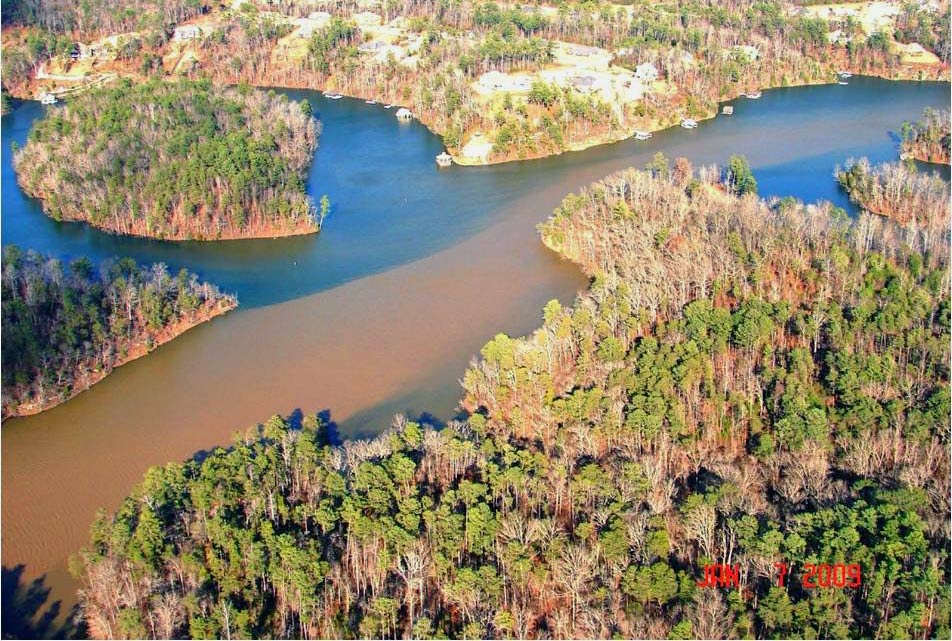By Case O’Dell
For the Opelika
Observer
Believe it or not, when it comes to Alabama’s freshwater resources, the main pollutant is sediment. Sediment is natural, but when released in significant quantities it can have detrimental effects on water quality and lead to many other hazardous conditions.
Sediment that is suspended in water can limit the depth to which sunlight penetrates.
This decreases the presence of dissolved oxygen by lowering the functionality of photosynthetic algae and other aquatic plants that form the base of stream and lake food chains. Additionally, water temperature tends to rise when large amounts of sediment are introduced during storm events. This affects water chemistry and can lead to unfit conditions for many fish and other aquatic organisms. Excess sediment also clogs drains and outfalls, resulting in flooded roadways and impeded navigation. So, how does something natural get released in a way that leads to all these negative impacts?
Issues arise when construction sites and other areas under development fail to implement what are called “best management practices,” or BMPs. These are practices and/or devices that are designed to protect stormwater through both erosion and sediment control.
Typically, this is accomplished in conjunction with phased construction, disturbance minimization and stabilization of exposed areas. BMPs range from simple seeding and mulching of bare areas to complicated water filtration systems. The combination of ineffective BMPs and poorly managed construction sites translates into problems. When rain falls on a disturbed site, the water flows through the project as stormwater. Along the way, this stormwater picks up fine soil particles through the process of erosion. We have discussed previously the usual destination of stormwater: our creeks, streams and lakes.
But besides construction there are other, more familiar activities that have the potential to pollute streams with sediment. Improvements in the yard, land grading and working a garden or farm can all have an impact on our waters if we do not control erosion.
Earth that is disturbed during these activities is no different from earth disturbed during construction.
It all has the potential to flow into stormwater systems, and ultimately our waters, if not controlled.
A muddy lake, dirt tracked into the road and flooded streets may all be symptoms of poor erosion and sediment control. Being able to identify and report problems that relate to erosion and sediment control is a key step toward improving the quality of our water. However, it is important to note that some problems are to be expected. Sites that take the utmost care in protecting stormwater by implementing BMPs and managing construction activities may still have the occasional issue. We can’t control the weather, after all.
Ensuring that sediment remains on construction sites, active developments and our own properties instead of stormwater inlets, drains and infrastructure is key in helping to alleviate the burden of pollutants on Opelika’s creeks, streams and lakes. Do your part to minimize the impacts of erosion on our waters. When you see issues, report them to the city.
Also, when working around the house, be sure to keep in mind the potential for sediment to contaminate stormwater.
O’Dell is an engineering technician with the City of Opelika. He is a Mississippi State graduate and has been with the city since 2017.

